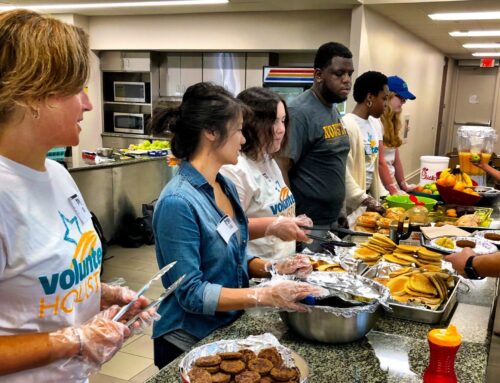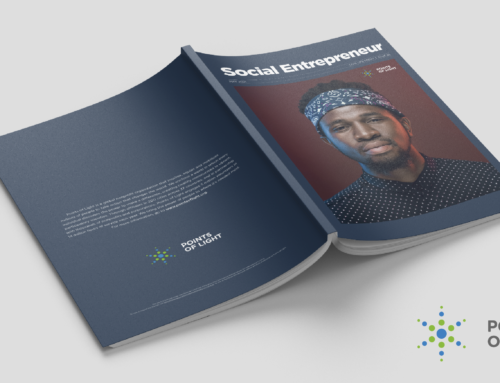Four Self-Care Strategies for Nonprofit Leaders
“Self-care is not selfish. You cannot serve from an empty vessel.” – Eleanor Brownn
May is mental health awareness month. Every year, nonprofits and government agencies use this month to fight stigma, educate the public about the support available and advocate for policies that advance mental health and well-being. However, it is equally important for social sector leaders to highlight the importance of our own mental health and its role in keeping employees engaged, productive and happy. In fact, a recent study by SHRM Research found:
- Only 1 in 3 U.S. workers say their job has a positive impact on their mental health.
- Furthermore, 1 in 3 U.S. workers say their job has had a negative impact on their mental health in the past six months.
- Among U.S. workers, 77% believe employers have a responsibility to reduce mental health disparities at work.
- Access to better mental health resources could improve the mental health of 63% of workers.
Nonprofit and social sector professionals are givers by nature, putting us at significant risk for burnout. As servant leaders, we must ensure that our nonprofits have adequate mental health coverage, but we also must find small ways for self-care. So, I thought now would be a good opportunity to put our typical topics on hold and talk about how we as a sector can take better care of ourselves through hacks I have found that work and are relatively inexpensive
I grew up in a family of givers – my parents were principals and all my aunts were teachers. When I came home from school, we had chores. We rarely took vacations. And I assumed everyone was just like us. Then, as a senior at The University of Texas at Austin, I was lucky enough to be selected for a leadership class taught by Sarah Weddington, who sadly passed away last year. While she was known for her work in Roe v. Wade, she did so much for our country as a public servant and as a teacher of countless “leaders-in-training.” I was stunned one day in class when she said that it was important for leaders, especially servant leaders, to find ways for self-care. As an example, she recited the often-ignored in-flight instructions: “In the event of a loss of cabin pressure, an oxygen mask will drop from above. If you are traveling with a child, place your mask on first.” This was an a-ha moment for me – I realized that burnout was a real risk when you give until you’re depleted. Since then, I have been a voracious reader of articles and books about self-care and mindfulness. I knew I was never going to change being a giver, but I could learn how to set the right boundaries to be able to keep giving without completely draining myself.
Here are some of my best tips:
Find Your Cheerleaders
Research suggests that people with strong support systems live longer, are happier AND stay longer at their jobs longer. While we all need our families and friends, in the social sector I have found that the best support comes from my colleagues who understand the “tough job” and are also on a journey of personal growth. These can come in the form of formal Leaders Circles or informal ones, as long as they include regular gatherings for collective peer support. I also have several colleagues that I call my “Ring of Fire” – I keep these individuals on speed-dial when I’m a “girl on fire” and things are going great, or when I’m “on fire” and need to vent and find comfort. These individuals understand me and the situation – they celebrate wins with me and help me pivot when I’m down and need encouragement to get back in the ring.
Start today: Make that list of your cheerleaders and set up a regular time to talk or join/start a Leaders or Accountability Circle.
Hyperfocus on Q2 Activities
I love the book, The Five Choices, by the time management experts at Franklin Covey. One of their choices is to “act on the important, don’t react to the urgent.” They cover the 4 quadrants, which are used in a simple matrix that assesses tasks as either Important/Not Important, and Urgent/Not Urgent. The quadrants show us how we can get trapped in other people’s urgent requests or time wasters, such as Facebook and emails. The authors suggest that most of us are more productive (and happier) focused on Q2 (Important, Not Urgent) activities, where our long-term goals and our core values are aligned with our activities, both professionally and personally.
Start today: Track your time and see where you spend your time by quadrant. Then, next month start being intentional about how to maximize your time on the most important activities. Pare back anything that isn’t serving your goals.
Shift to Energy Management
I used to be a time management zealot, but now I also monitor my energy to get the most out of every day. It sounds very new age, but it really works. Ask yourself: What time of day do I have the most energy? What people give me the most energy? What activities excite me? (And, of course, the reverse – where is my energy drained?) Now, my goal is to plan the most important activities (for me, writing and strategy) when I have the most energy, surround myself with people who give me energy and do activities in which I excel. I delegate or delete the rest.
Start today: When you are tracking your time, track also how you feel about the activity, the people involved and what time of day it is. Then, strategize the best timing for each activity. For example, I love meeting with young people interested in careers in the social sector. I used to do it whenever I was free, but now I only do it on Friday afternoons when my energy is almost drained from the week. Why? First, it doesn’t require much of my energy and, second, talking with young people actually adds to my energy because their passion is contagious. It has now become a great way for me to launch my weekend.
Give Appreciation Liberally
Because we work in the social sector, we often fall into the trap of thinking that our team members do the work because they are passionate and that this passion is enough to satisfy them. However, all people need feedback on their work. In formal and informal performance reviews, we often focus on critique, but individuals learn just as much, if not more, from positive feedback. And for individuals in the social sector, especially those working with abuse or illness, that positive feedback often helps them combat all the negative things happening around them.
Start today: Start a Spot Award where any staff member can “spot” another doing something great and make a list on a bulletin board in a common area. Or, as an individual, make it a fun daily challenge to spot three people around you going above and beyond and tell them you appreciate it. I practice what I call – BrightSpot5 – where I reflect each Friday on the 5 people who made my week and just send them a text of specific appreciation. It is a simple task, but the return for me and them is immense. Giving appreciation makes a world of difference to other givers. And you will notice over time that it makes a difference in your outlook.
I am a “work-in-progress” – each and every day I strive to give to others without giving it all away. Over time, I have found my triggers and now know how to circumvent or counteract them. And if I fall short, I give myself a moment of grace and know that I can start over the next day. I would love to hear how you take care of yourself and encourage self-care in your organization.




















